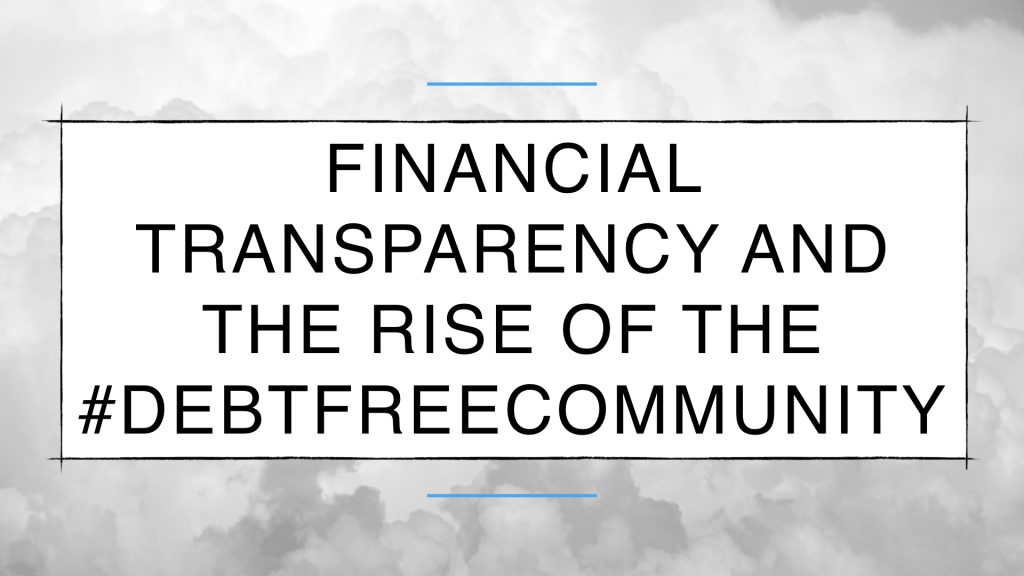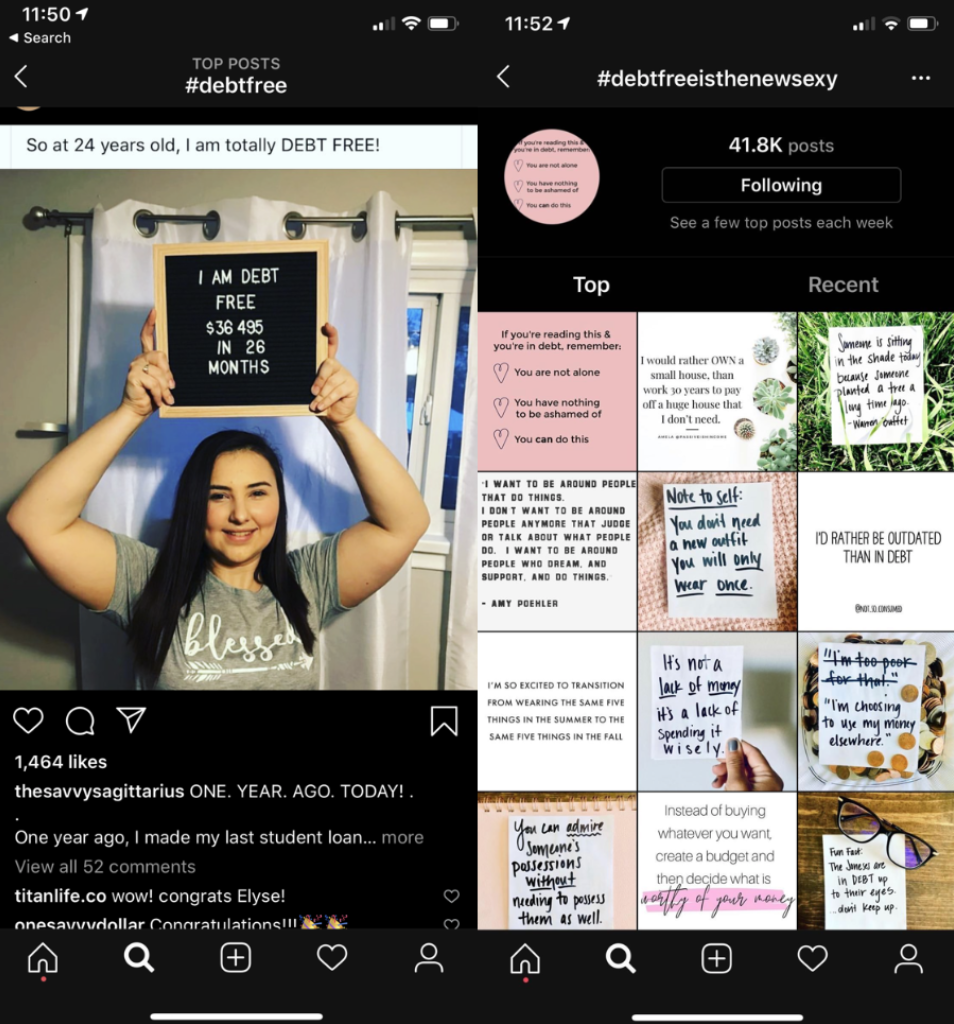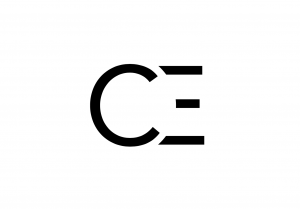
Historically, debt was considered private and spending was public. Social media has long been a showcase for the things money can buy—travel! fancy nights out! property!—but over the past few years, the conversation around debt has come to the forefront.
Though the roots of the trend can be traced back to the rise of personal finance personalities like Dave Ramsey and Suze Orman, social platforms now provide an unmediated forum for frank financial discussions. Hashtags relating to personal finance have proliferated on Instagram, for example, from #debtfreecommunity to #debtfreejourney to, my personal favorite, #debtfreeisthenewsexy.
Why does this matter? It’s further proof of shifting societal norms around money. Where revealing one’s financial struggles was once considered taboo, it’s now being recast as an act of solidarity or empowerment. Such financial confessionals can provide a sense of community (“You have about as much debt as 1.5 million other Americans”) and ease feelings of despair or helplessness. From a fintech standpoint, this trend toward transparency presents an opportunity for increased product utility and engagement. The hashtag #debtfreecommunity is a movement; it’s also a model for viral growth.
An entrepreneur’s intent and ethos is evident in the product design. As we become more directly attuned to the scope of society’s challenges with debt—as well as the stories of those who have successfully extricated themselves—the next generation of fintech products is likely to look much different than the financial tools of the past.
Anish Acharya, a16z fintech general partner

